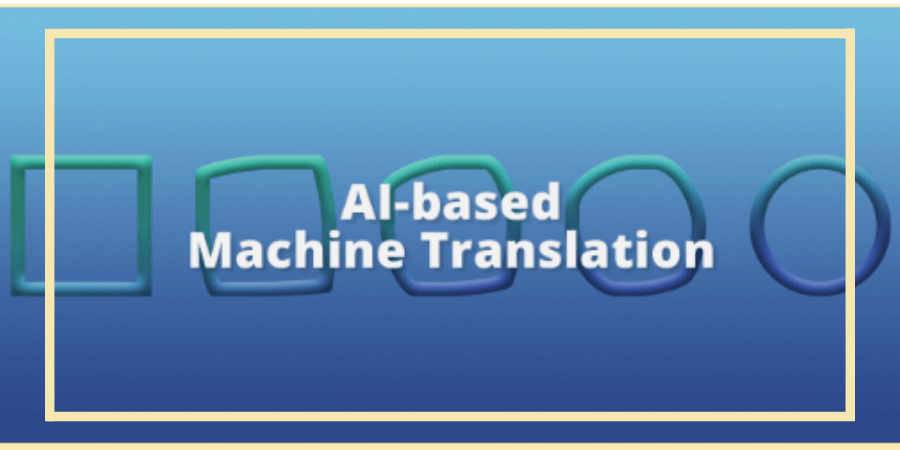When Google Translate was launched back in 2006 — aiming to eliminate global language barriers — it only supported two languages, with limited predictive algorithms. Ten years later, over 500 million people were using Google Translate, translating over 100 billion words a day in 109 different languages. Such a significant leap in automatic translations wouldn’t have been possible without two breakthrough technologies: machine translation (MT) and artificial intelligence (AI).
In case you missed it, machine translation is the process of leveraging artificial intelligence to automatically translate content from one language to another, without relying on human input. Artificial intelligence is at the heart of development in the machine translation industry.
Now, you must be wondering what is the role of AI in machine translations, and why does it have such a disruptive potential for the translation industry? Let’s first walk through the role of AI in machine translations.
The Role of Artificial Intelligence in Machine Translation
While AI has been one of the main catalysts of the machine translation industry’s development, it’s important to first understand where we stand today. AI and machine translations are still in their technological infancy. Despite significant developments, most machine translations still require human oversight for context and accuracy. So, machines won’t be replacing human translators anytime soon. But, on the flip side, no human translator can match the speed and throughput of machine translations.
That being said, translation engines have never been as close to replacing human translators, but have still carved out a significant place for themselves thanks to the rapidly advancing field of AI. Simply put, AI helps translation engines become smarter, by collecting, analyzing, and interpreting large sets of data. Since language is ever-evolving, translation engines need to constantly keep up the pace, to be able to come close to eradicating cross-linguistic boundaries. So, how exactly is AI helping translation engines continuously evolve?
Google Translate, for instance, uses AI and deep learning, known as neural machine translations (NMT). This is a machine translation method that uses an artificial neural network to predict the likelihood of a sequence of words. So instead of translating a sentence word-for-word, AI-based translation engines will learn the meaning of entire sentences. To date, neural machine translation is the most advanced approach to machine translations, far outranking the previous rule-based machine translation models in grammatical and contextual accuracy. This is the same technology that gives you more accurate suggestions when you’re typing on your phone.
In essence, Google Translate’s AI-based neural network is capable of deep learning — an advanced method of machine learning also employed in self-driving cars and face recognition technology. In machine translation, neural networks use millions of examples to learn and create more accurate and natural translations over time. Google’s neural network translates whole sentences at a time, capable of encoding the semantics of a sentence, rather than memorizing it phrase-to-phrase.
AI and deep learning created a paradigm shift in the translation industry, resulting in faster and more cost-efficient translations. Professional translators rely increasingly on machine translations, which work well with certain types of texts that require less subject matter expertise and significant human post-editing. Now, let’s take a look at some of the main use cases for AI-based machine translations and what’s in store for the future.
Artificial Intelligence is Eradicating the Language Barrier
By further developing neural machine translation networks, AI and deep learning algorithms created numerous new use cases for automated machine translations. As a result, a great number of industries started implementing the technology.
SDL Government — a global innovator in language translation technology — uses its machine translation system to translate social media news feeds in real-time, in order to offer actionable insights to the government.
The healthcare industry also found utility in machine translations, as Canopy Speak implemented it to create the first medical translator app. Canopy Speak claims to offer the largest corpus of pre-translated medical phrases in the industry. It allows doctors to ask their non-English speaking patients questions via text-to-speech translations. At present, it only offers a one-way communication channel.
These are just two examples of companies relying on machine translation, but the technology has been incorporated in numerous other industries, including e-commerce, finance, legal, software, and tech. The U.S. Army has even implemented a machine foreign language translation system that offers machine translations via text and speech to soldiers.
While AI-based machine translations are already eradicating cross-linguistic language barriers, there is still a need for greater semantic and contextual understanding. The next wave of innovation in AI will likely introduce custom terminology glossaries that can be selected according to the type of translation. The hope behind customized glossaries is that they will bring greater accuracy for translations requiring greater subject matter expertise. Future neural networks will also develop on-the-go machine translation training, meaning that translation engines will be able to learn in real-time, during the translation process.
AIWORK is one of the most significant companies dedicated to the development of AI. Its blockchain-based AI network combines the efficiency of artificial intelligence with the resolution of human experts, to create data sets that make AI smarter. AIWORK’s open, crowd-sourced marketplace specializes in AI machine transcription, translations, and creating high-quality AI metadata for online videos.


